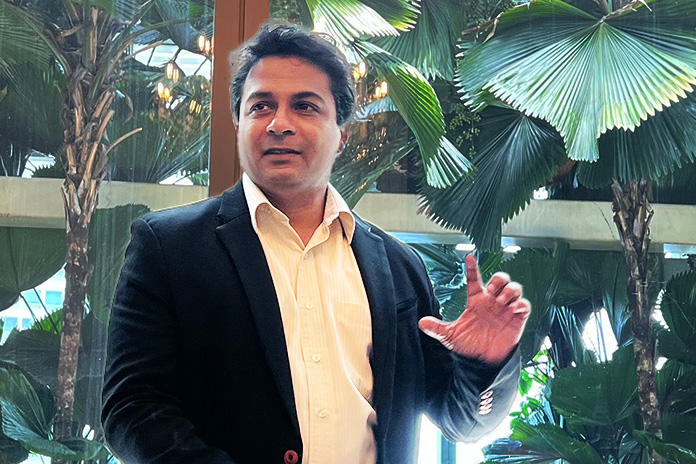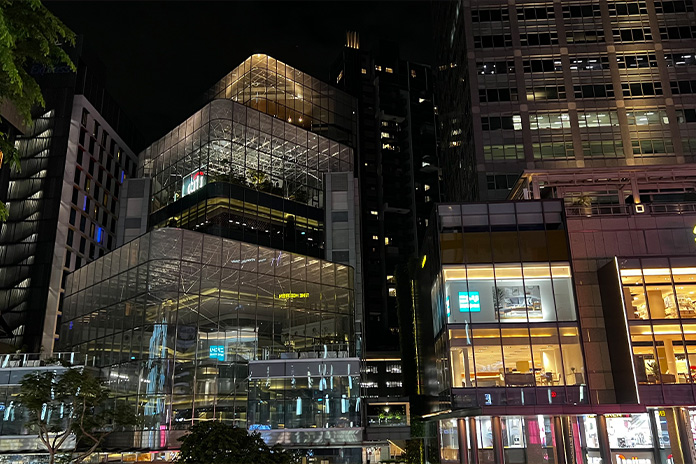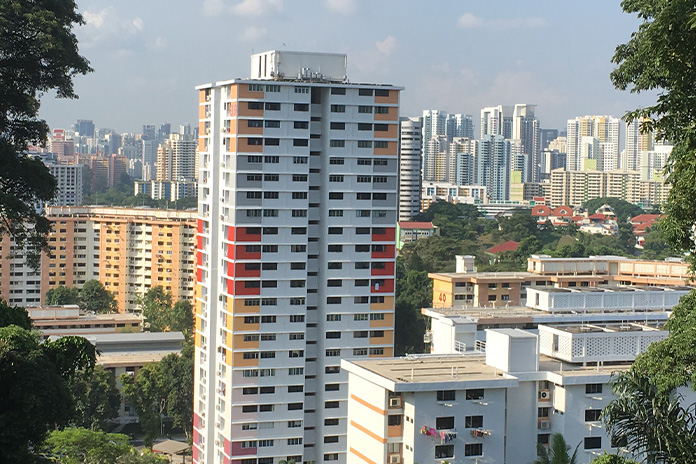
WHILE many companies slap the term ‘Artificial Intelligence’ (AI) on their products in a trend that is becoming a marketing necessity, few utilise AI as part of a logical business model.
It can be difficult to discern what’s hiding under the label.
AI commonly conjures up high-level concepts such as synthetic consciousness and grand questions about what it means to be human, or anxiety around dangers of AGI (artificial general intelligence) and its potential to destroy humanity.
Getting granular reveals that modern AI methods such as machine learning are advanced pattern recognition techniques, finding trends in vast quantities of data that would take lifetimes for an individual to decipher.
Overcoming AI Saturation
Iviva, part of the Singapore-based smart technology Eutech group, enables property stakeholders to control all aspects of their property from a single digital environment. Iviva helps building stakeholders contribute to the low carbon future, while minimising operating costs and manpower. The bigger picture is to help in the ever more threatening problem, climate change.
Climate scientists have sounded the alarm that failure to limit the increase in global average ambient temperature to 1.5°C will result in catastrophic consequences for the environment and mankind. Most countries are well behind on short term targets for net zero emissions by 2050. As CEO of Eutech Cybernetic, which owns Iviva, Lakshita Wijerathne explains, these targets are no longer negotiable.
Competitors in the workplace optimisation space use their ambiguous websites to make fantastical claims of the ways they can use AI to optimise everything, from building design to the arrangement of the pens on your desk. Thankfully, Iviva’s website does not focus on ramming AI down your throat, rather it features a concise selection of case studies.

Smart Moves
Iviva has spent decades developing and implementing smart buildings, facilities management, and workplace solutions for the property technology and building industries, with sustainability as their overarching objective. Their business model is oriented towards empowering owners of retail and commercial spaces to contribute to the low carbon economy, with their digital management system being scalable from buildings to cities.
In the case of buildings, Iviva’s digital platform enables stakeholders to control a building’s ‘active systems’ from a single environment. The setup involves collecting data, which is fed into a machine learning AI model that provides insights into how a building’s systems work in tandem with its usage and provides actionable suggestions for optimisation. Improvements include automation of manual jobs, and reducing water, gas and electricity consumption. In many cases IoT (Internet of Things)-type sensors are installed to provide additional data.
Iviva aims to onboard 100 million users to their digital ecosystem. Despite this ambitious target, it focuses on the goals of stakeholders, tailoring their product to the KPIs or critical success factors of those looking to digitalise property management.
Finding Clients in a Skeptical Crowd
Sustainability conscious property managers and landlords often seek out Iviva’s digitalization services to help with their ESG reporting. However, many of the industry’s clients are those who feel obligated to meet the requirements of government ESG reporting mandates and brace themselves for the additional costs.
“The purpose of optimisation is to save money. Spend now to save later,” Lakshitha explains.
While realising the low carbon economy requires businesses to reduce their carbon footprint, it should also be done in a way that reduces operating costs, improving profitability and hence asset valuations. The green revolution must be economically viable, Lakshita points out.
BCA (Building and Construction Authority) has been spearheading an initiative across Singapore’s built environment, creating low-energy and net zero building certifications to encourage green practices, while incentivising adoption by way of grants.
“The lack of understanding of the benefits of reducing a property’s carbon footprint is driven by the lack of affordable solutions in the market,” says Lakshita
Sustainability consultants, now an industry relic, typically instal data loggers that track energy consumption, producing a report after several months with suggestions for optimisation. However, these costly and time-consuming consulting practices often provide impractical advice that involves replacing entire systems. Such short-sighted approaches with slow and limited ROI do not inspire landlords to undertake a tech refresh.
Iviva helps the discouraged majority take the first steps on their low-carbon journey, but they understand that it will take time and education for people to fully embrace change.

ALSO READ: Why Manuka Honey Is The Bee’s Knees
To Demolish or Not to Demolish
Researchers have conclusively stated that it is always better to improve an existing building than to demolish and rebuild. Lengthy, manpower intensive demolition processes produce significant carbon emissions. Furthermore, rebuilding on the same premises will effectively double energy and manpower usage.
Lakshita recounts that the building industry contributes to roughly 39% of energy-related emissions; 28% of these are related to operations, while 11% come from construction processes and the materials used. Researchers recommend delaying demolition as much as possible.
To this point, Iviva is mainly a tech layer.
The Detailed Procedure
When working with a new property, Iviva first conducts a site audit to understand the full scope of active elements present and their ability to integrate with Iviva’s platform. Buildings from the last 10-15 years commonly feature 10-20 active elements such as access control, CCTV and energy measurement systems, all of which are integrated to produce a single data environment. AI and analytical engines ingest this ‘data lake’, transforming the raw data into actionable insights that would otherwise be impossible to obtain.
Intuitively, it is much easier to integrate newer buildings and systems onto a single digital platform. However, even with 20+ years old building management systems, minor changes can enable a level of integration that can provide valuable insights for optimisation. For example, installing inexpensive IoT-type sensors to fill critical gaps in readings mitigates the need to replace older systems. Iviva emphasises squeezing the system you have to the maximum to get the most out of your long-term investment.
These insights enable stakeholders to predict maintenance, operations and even anticipate outlier faults, as opposed to standard scheduled or reactionary maintenance, enabling stakeholders to minimise maintenance costs.
ALSO READ: The Perils Of Populism
AI-powered, Data-driven Optimisation
Lakshita highlights that meeting rooms are a commonly misused space. Occupancy and movement sensors can give deeper insights into how space is being used. A simple example would involve integration of a meeting room’s air-conditioning and lighting control systems. Installing and integrating an occupancy sensor would enable service activation based on occupancy.
Many would be familiar with a handful of people having a meeting in a boardroom designed for dozens, particularly those in the C-suite. Such rooms require bigger air-conditioning systems and additional lighting, making the cost of such meetings excessive.
Post Covid, this trend has become exacerbated both by health concerns and the increased frequency of people working from home. Now, both meeting rooms and hot desk management systems need to be actively managed. Furthermore, air quality has become a greater concern.
By integrating the meeting room booking system and seating space management system, after augmenting the spaces with simple sensors, extensive reporting can show detailed trends of usage, such as hot desk utilisation and meeting room popularity. Air quality could be probed by installing several inexpensive, Wi-Fi friendly, IoT air-quality sensors. Integrating all systems would allow the coordination of meeting hotspots and identification of issues with air-conditioning and ventilation systems, allowing facilities managers to fix these ‘unseen’ problems.
Modelling In Practice
Iviva’s system enables customers to quickly access its benefits. Additionally, Iviva features a composable system, both digitally but also in terms of their partner consultants who provide much of the sensors they deploy. This versatility allows Iviva to move with the times, readily updating their product with the tech landscape. Iviva partnered with JTC to optimise air-con maintenance of their commercial buildings. ‘Sensorising’ a small section of one of their buildings enabled them to simulate the entire buildings’ air-conditioning system.

Medina, a tourism hub in Saudi Arabia, has engaged in a long-term, citywide digitalisation project with Iviva to integrate all existing data, systems and resources onto their platform, to provide large-scale sustainability management. This should enable inter-departmental collaboration. In addition, it will enable the city to instal smart services for inhabitants, the common platform will also be accessible to third parties who wish to implement business solutions. The details are left to the imagination, but the project is ongoing.
Integrating all digital systems in a single pot is a double-edged sword in the sense that it offers a greater surface area for attack, while concentrating bottlenecks of control. Iviva outsource their cloud services to modern tech giants such as Amazon, who can deliver high level security at a price that they alone can provide. In a sense they respect this new era of ‘techno feudalism’, and know which digital landlords are worthy of their trust.
The bottom line is that people see sustainability as a cost, rather than a profitable venture, hence the necessity for affordable services that can rapidly offer benefits.



















